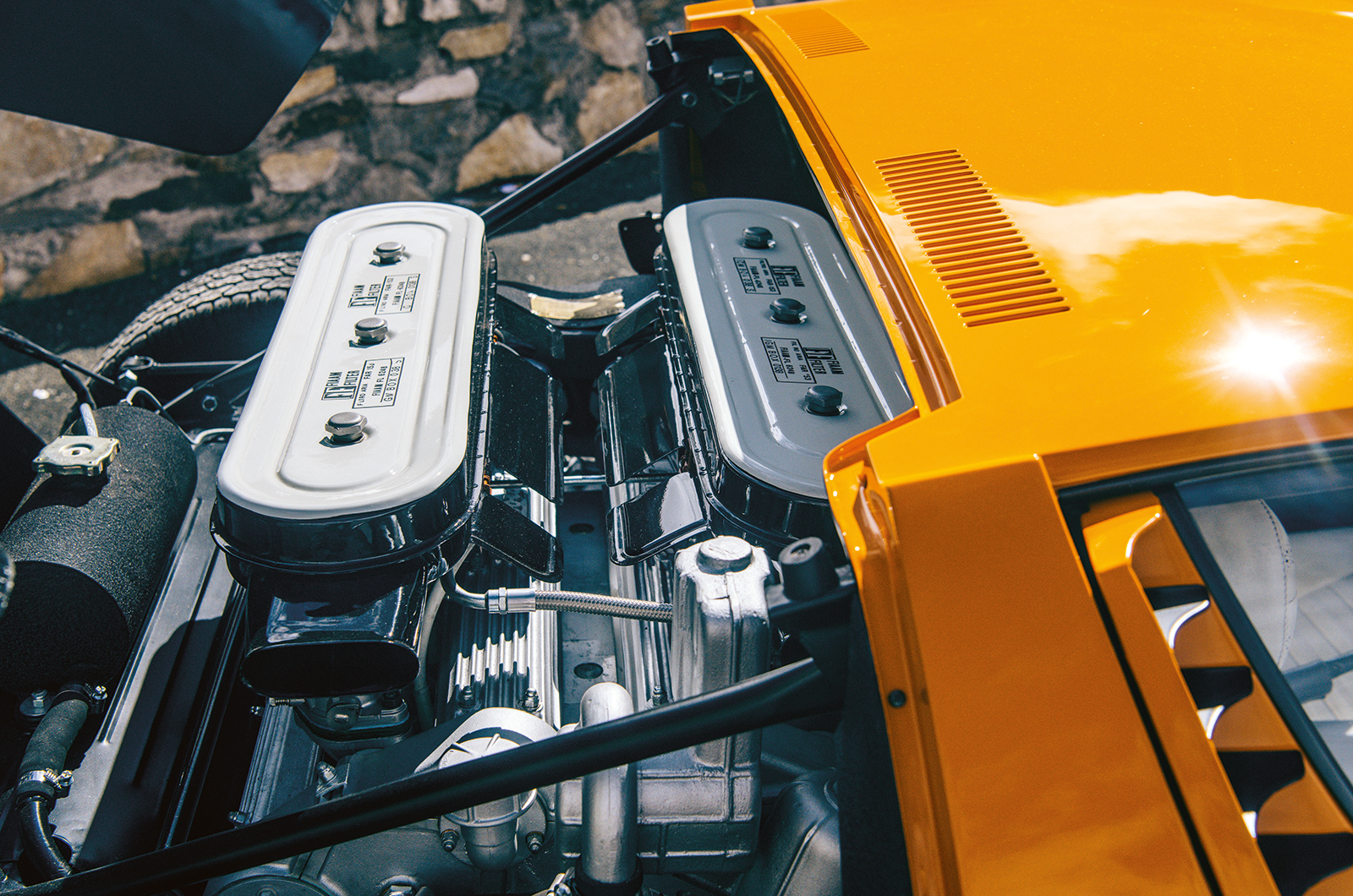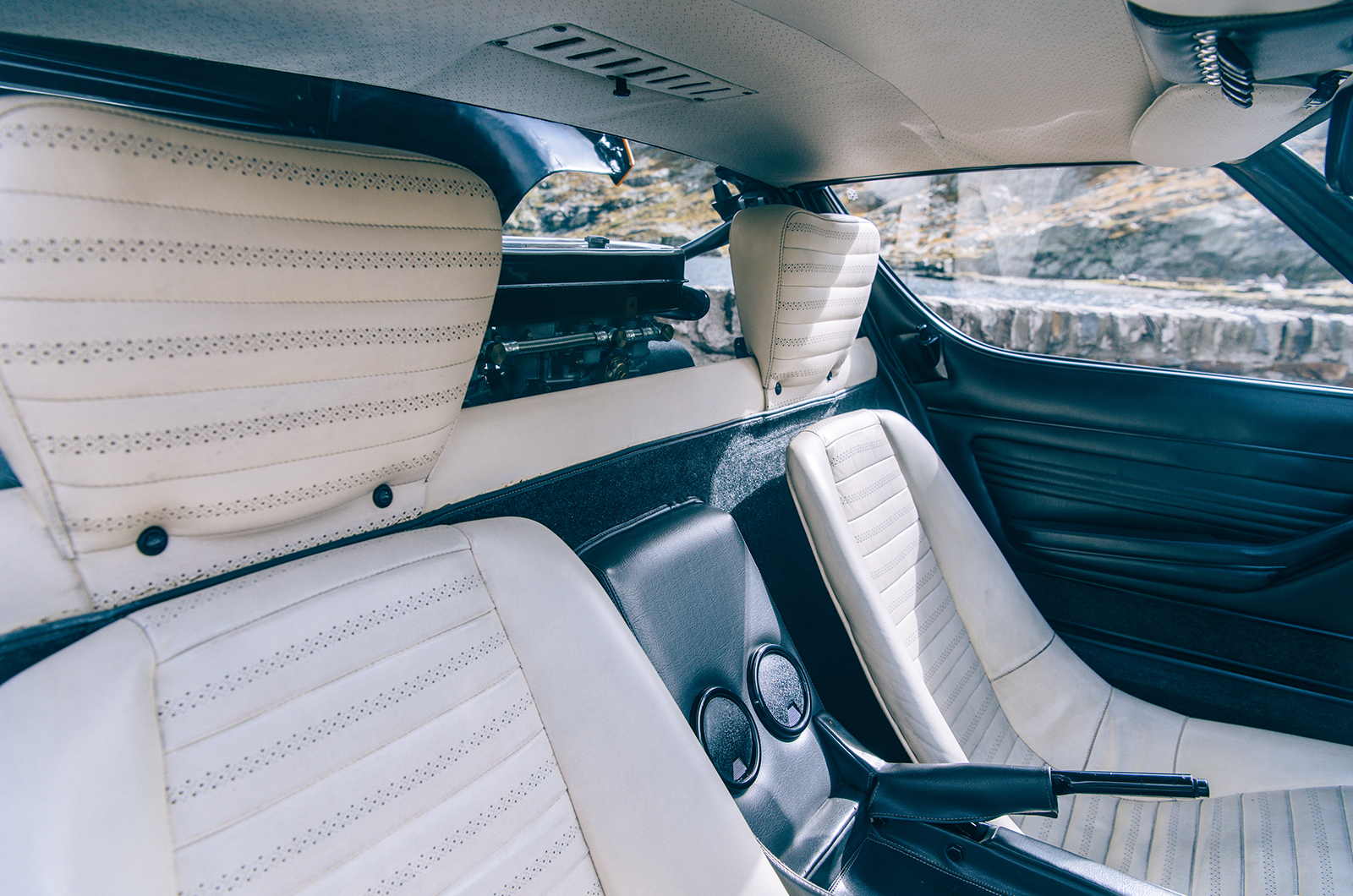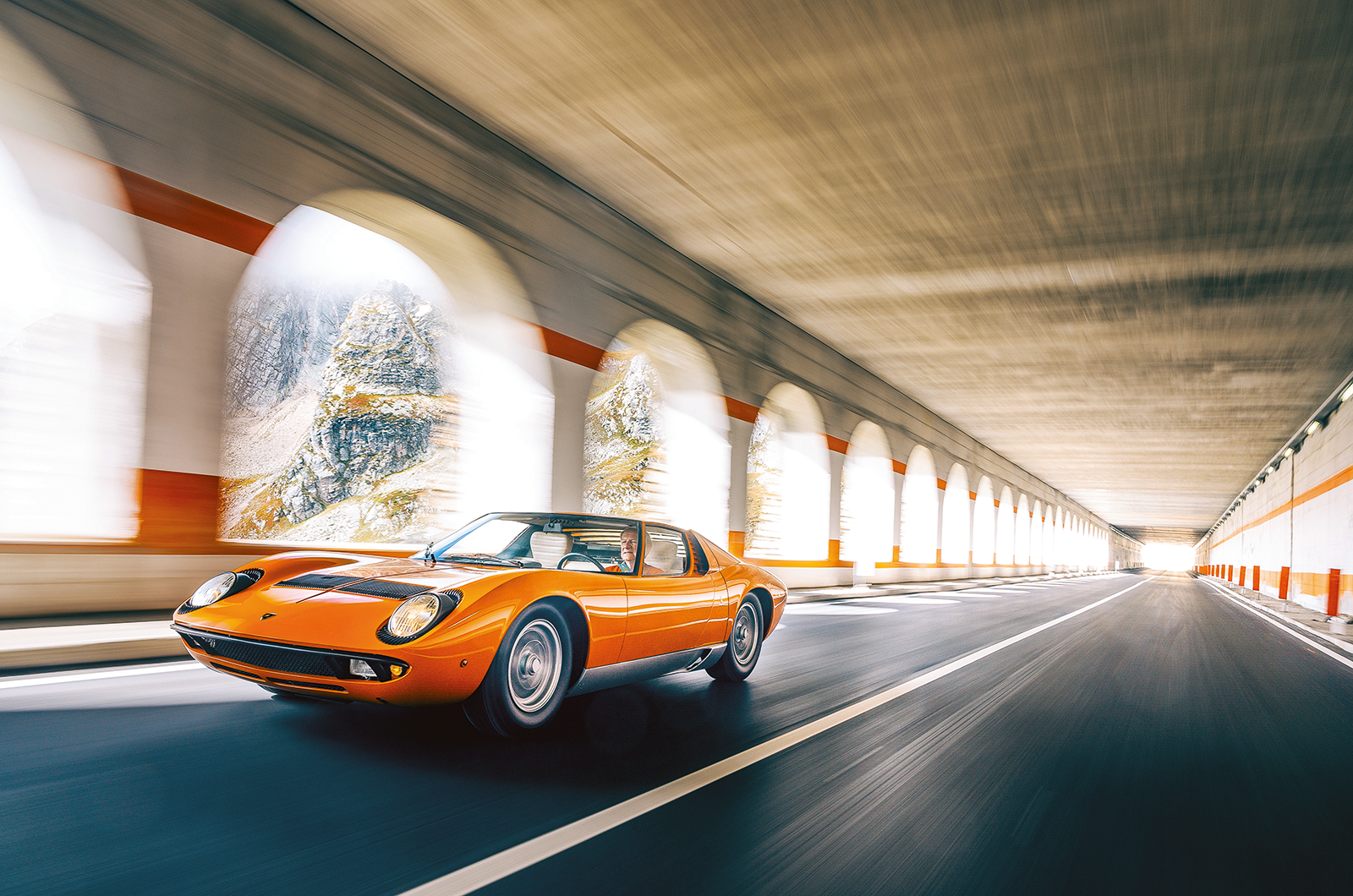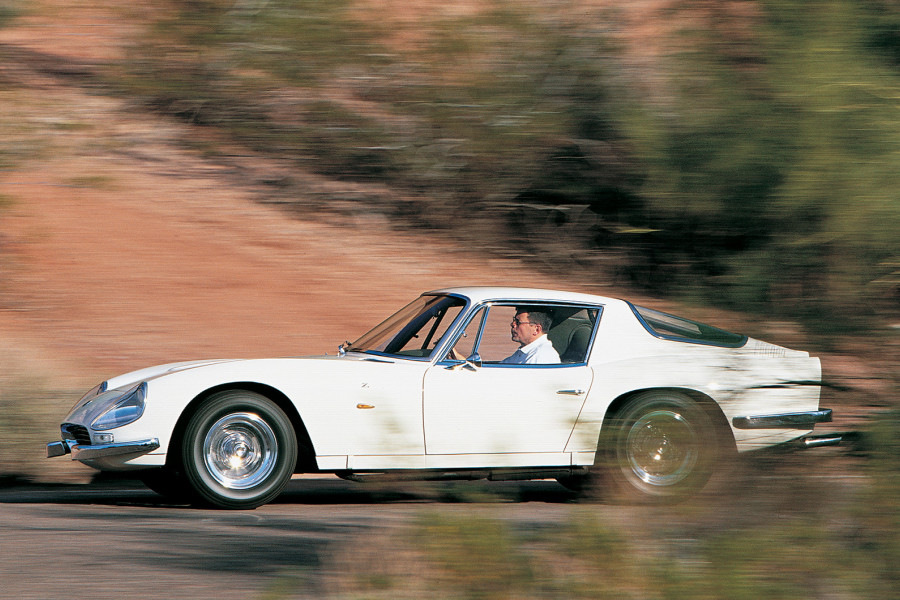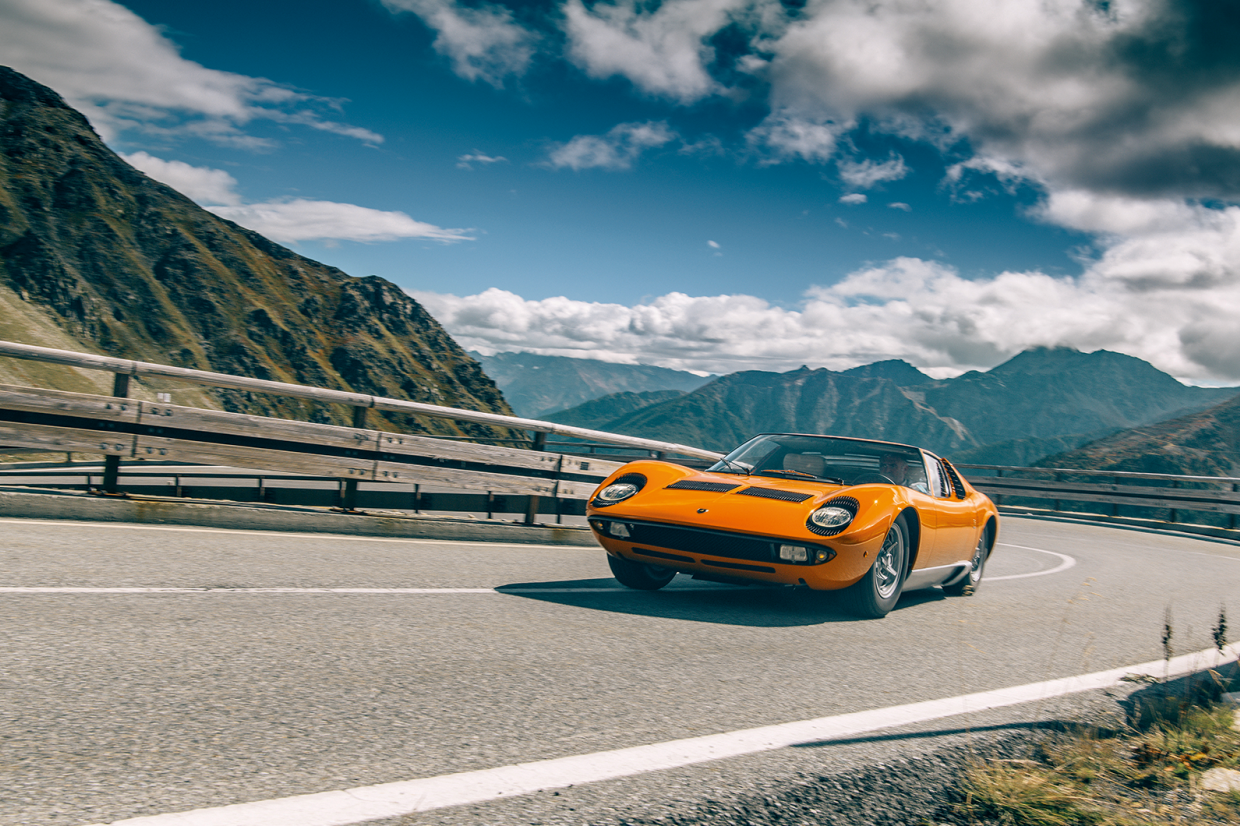
This can’t be happening.
We’ve just covered the 305m of the Dardanelli Viaduct in a flash of orange rage and are already negotiating the first hairpin bends of the Colle de Gran San Bernardo in a Rosso Miura Lamborghini.
This can’t be happening… Can it?
After all, that car met its end impaled on the front of a Caterpillar D7171A bulldozer, right?
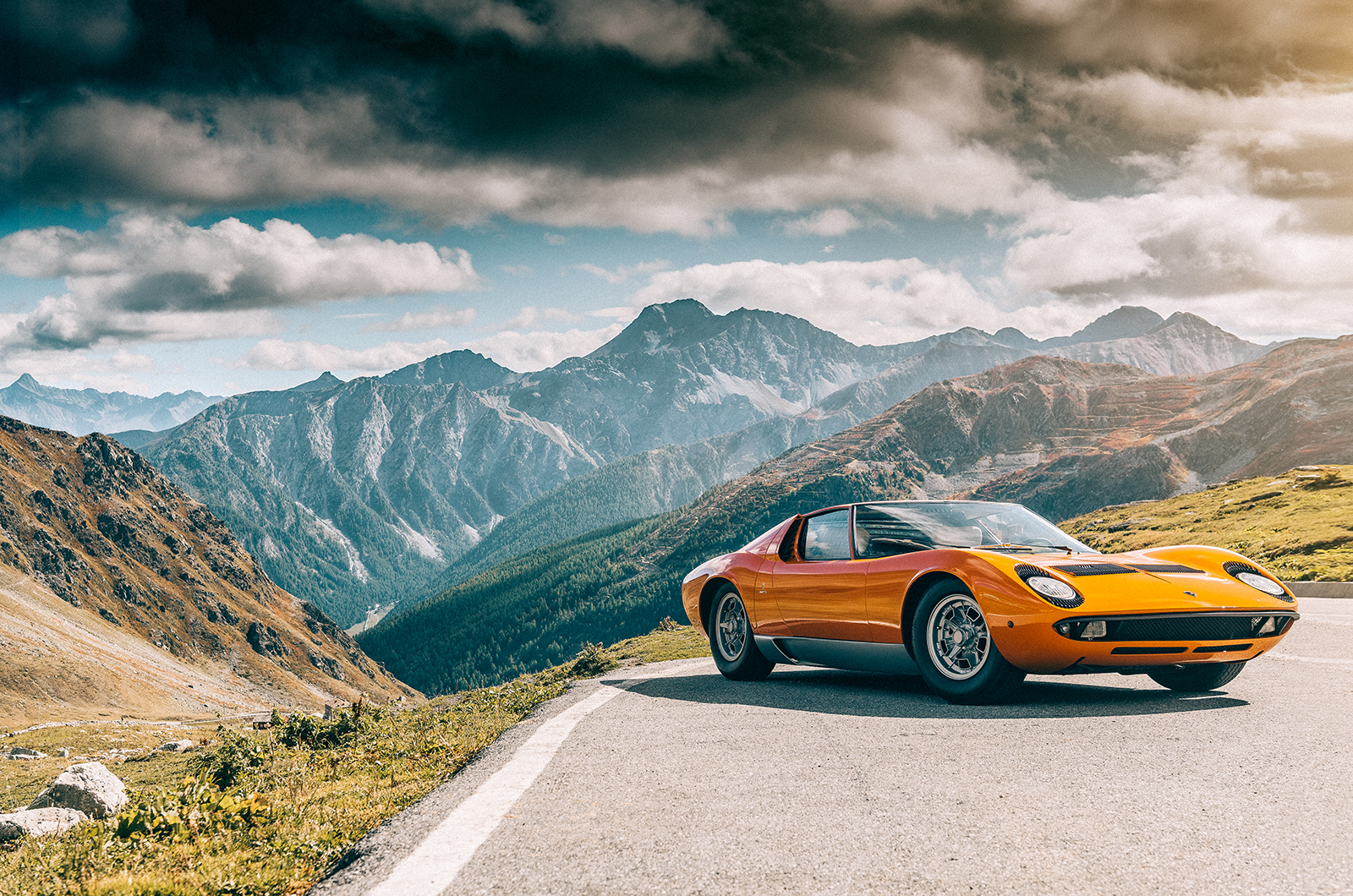
Yes, this is that car on those roads…
Wrong. Of course wrong, because as we all now know, the Lambo that met an ignominious fate just minutes into the 1969 crime caper The Italian Job was an engineless shell.
For decades, however, the true fate of the car driven by heist planner Roger Beckerman (Rossano Brazzi) was a source of speculation.
No more: the Miura P400 we’re in today has been certified by Lamborghini’s Polo Storico wing as the film-star car, and this is thought to be the first time it has returned to the Great St Bernard Pass since production of the film.
The same goes for its driver, Enzo Moruzzi, Lamborghini’s man on the scene and pilot of the Miura in all but the in-car images of Brazzi wearing those famous Renauld Mustang sunglasses and lighting the obligatory cigarette – shot via a camera mounted on the door.

Enzo Moruzzi reunited with this Miura – and the Prova plate




